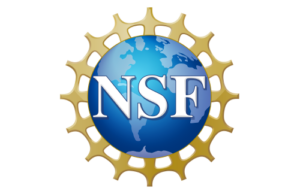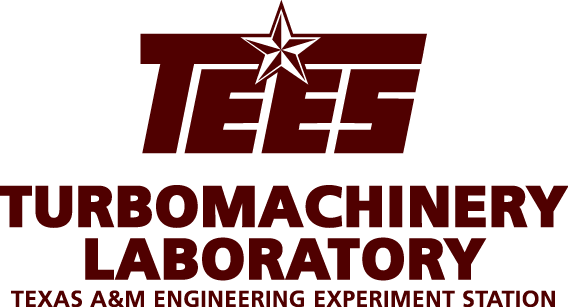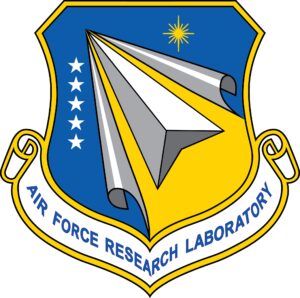Our research is funded by the following sponsors:
Vibroacoustic Characterization and Source Identification
The characterizations of vibroacoustic systems and their source identifications are important to make them operate quietly and efficiently or achieve their desired functions. Both numerical and experimental investigations are mainly conducted in the ASPL. For example, computational modeling analyses including Finite Element Method (FEM), Computational Aeroacoustic Analysis (CAA), Boundary Element Method (BEM), and Statistical Energy Analysis (SEA) are mainly performed as the numerical investigations. Regarding the experimental investigations, acoustic and vibration measurements are made by using sensors such as microphones, accelerometers, and laser vibrometers.
Sponsored Research Projects:
- “Computational modeling of eVTOL propellers and experimental model validation,” Texas High Energy Materials (Primary Sponsor: US Air Force Research Laboratory), Yong-Joe Kim (PI) and Paul Cizmas (Co-PI), 10/16/2023 – 08/15/2025.
- “Experimental identification of vibration damping and acoustic transmission characteristics of GAF’s viscoelastic materials,” GAF Materials LLC, Yong-Joe Kim (PI), 03/01/2024 – 07/31/2024.
- “Development of interior noise contribution analysis method based on aeroacoustic noise visualization,” SM Instruments, Inc., Yong-Joe Kim (PI), 11/01/2016 – 08/31/2018.
- “Contribution analysis of external aeroacoustic noise components to interior noise,” Hyundai Motor Company, Yong-Joe Kim (PI), 09/01/2015 – 08/31/2016.
Acoustical Field Visualization
Many acoustic wave propagation problems require understanding the generation, propagation, and reception characteristics of acoustic waves. One of major difficulties for understanding these characteristics is associated with the economical/physical restrictions that make it only possible to perform measurements on a small number of measurement points. For the purpose of overcoming the aforementioned restrictions, it is required to measure acoustic signals along lines or on a surface by using a transducer array and then project the measured signals into three‐dimensional (3-D) space. The 3-D wave field visualization methods, based on array signal measurements, can be applied to many engineering problems: e.g., sonar, radar, acoustical visualization, medical imaging, structural health monitoring, seismic survey, and so on. The ASPL has been developing new visualization theories and improving the existing linear visualization procedures such as Acoustic Beamforming (AB) and Nearfield Acoustical Holography (NAH) procedures: e.g., nonlinear acoustic projection theory, source non-stationarity compensation, “virtual” reference technique, “patch” NAH, and NAH in moving fluid media. The ASPL has also applied these theories and procedures to a broad range of aeroacoustic and vibroacoustic systems to identify their acoustical characteristics: e.g., fan/jet noise problems, structural health monitoring systems, unmanned aerial vehicles (UAVs) for acoustic surveillance, and so on.
Sponsored Research Projects:
- “Acoustical Touch and Drag Positioning: Phase I – Experimental Concept Proof,” Vialab Inc., Yong-Joe Kim (PI), 11/1/2013 – 3/31/2014.
- “Study on Turbomachinery Fan and Impeller Noise Sources and Their Vibro-Acoustic Coupling Effects on Possible Structural Failure,” Texas A&M University Turbomachinery Research Consortium, Yong-Joe Kim (PI), 12/01/2010 – 11/30/2012.
Acoustics in Microfluidic Devices
When biological particles, suspended in the fluid flow of a micro-channel, are excited by ultrasonic standing waves, the particles are collected at the nodes or anti-nodes of the standing wave patterns depending on their mechanical properties. This particle motion is caused by the second order nonlinear acoustic force of the excited acoustic waves. The ASPL has developed a numerical simulation code to design a microfluidic device to effectively separate biological particles and conducted experiments with various micro-channel designs. In the near future, this technique will be applied, for example, to separate cancer cells from a blood stream.
Sponsored Research Projects:
- “Multi-Frequency Multi-Parametric Acoustophoretic Microfluidic System for Particle and Cell Separation,” National Science Foundation, Yong-Joe Kim (PI) and Arum Han (Co-PI), 08/01/2012 – 07/31/2015, Grant No.: ECCS-1232251. [Award Abstract]
- “Microsystems for Low-Concentration Oil Detection from Environment,” U.S. Army Engineering Research and Development Center, Arum Han (PI) and Yong-Joe Kim (Co-PI), 05/01/2012 – 06/30/2013, Grant No.: W9132T-12-2-0022.
Acoustics in Oil/Gas Industries
The ASPL has conducted research on acoustic problems in oil/gas industries. For example, the ASPL has been developing a ground measurement system to monitor the vibrations of the bottom hole assembly (BHA) in a drillstring system. The BHA vibrations are generally monitored by using vibration transducers installed in or close to the BHA. Then, the measured signals are reduced, encoded in mud pulses, and transmitted through the mud to the ground. This mud pulse telemetry has a limited band width so that it cannot be used to transmit all necessary information in a real time for appropriate drilling strategies. In rare cases, it fails to transmit mud pulse signals to the ground due to low signal-to-noise-ratio (SNR), which makes drilling operators blind to downhole drilling conditions. Recently, the measured vibration signals have been directly transmitted through wires with replays between adjacent two drillstrings, which is referred to as the “telestrings”. The latter approach can be used to overcome the aforementioned issues with the mud telemetery. However, the telestrings are very expensive. In order to address these issues of low band width and low SNR of a mud pulse telemetry system, and to avoid expensive telestrings, a novel ground structural health monitoring system, based on the wave propagation characteristics of drillstrings, is being developed to monitor the downhole drillstring vibrations in a real time.
Sponsored Research Projects:
- “Acoustic multi-stage fracture diagnosis,” Crisman Institute for Petroleum Research, Texas A&M University, Ding Zhu (PI) and Yong-Joe Kim (Co-PI), 09/01/2014 – 08/31/2016.
- “Experimental Based Characterization, Model Verification, and Vibration Suppression for Drillstring Dynamics,” Qatar National Research Fund, Mansour Karkoub (PI), Yong-Joe Kim (Co-PI), and Alan Palazzolo (Co-PI), 01/01/2012 – 12/31/2015, Grant No.: NPRP 4-537-2-200.
Noise and Vibration Control
Noise and vibration control is an ultimate goal of the ASPL’s research. The ASPL mainly investigates both passive and active control schemes. For passive noise and vibration control, poroelastic materials such as fiberglass and foam and vibration damping materials are extensively studied. A personal-computer-based, digital signal processing system along with noise and vibration transducers and actuators are used for the experimental implement of various active control schemes. For the optimal control system design, finite element and boundary element methods are applied to model vibro-acoustic systems. Then, optimal passive control treatments as well as optimal transducer and actuator locations are determined from the numerical models.
Sponsored Research Projects:
- “Acoustic Signature Reduction in Aircraft’s Propellers and Wings Using New Materials Inspired by Owl Wing Feathers,” Texas High Energy Materials, LLC (SBIR Phase I, Primary Sponsor: Department of Defense), Yong-Joe Kim (PI), 04/17/2017 – 08/31/2017.
- “Contribution analysis of external aeroacoustic noise components to interior noise,” Hyundai Motor Company, Yong-Joe Kim (PI), 09/01/2015 – 08/31/2016.
- “Development of active noise control system for suppressing noise radiated from rocket engine test facility,” SpaceX, Yong-Joe Kim (PI), 09/01/2013 – 12/31/2013.
- “Noise reduction of Samsung Techwin’s single- and multi-stage compressors: Phase II – Design, implementation, and evaluation of noise control methods,” Samsung Techwin, Yong-Joe Kim (PI), 04/01/2013 – 01/31/2014.
- “Modeling and experimental validation of pulsation generated at discharge port of screw compressor,” Texas A&M University Turbomachinery Research Consortium, Yong-Joe Kim (PI), 04/01/2013 – 03/31/2015.
- “Noise reduction of Samsung Techwin’s single- and multi-stage compressors: Phase I – Experimental noise source identification and recommendation for improving acoustic performance,” Samsung Techwin, Yong-Joe Kim (PI), 08/01/2012 – 12/31/2012.
Structural Health Monitoring (SHM)
Recently, Acoustic Beamforming (AB) based SHM procedures have emerged for the applications of “simple” and “ideal” structures: e.g., infinite-size and uniform-thickness plates. Since acoustic waves can propagate long distances, these AB-based SHM procedures can scan large areas to identify the locations, shapes, and sizes of structural damages, while most of existing SHM procedures based on vibration measurements may only provide information on the existence of structural damage. However, in a “real” system, high level waves are reflected from many discontinuous features such as reinforced stiffener joints. Therefore, the existing AB-based SHM techniques used to monitor “simple” and “ideal” structures cannot be applied to “real” discontinous systems. The ASPL has developed a novel, model-based, time/frequency beamforming procedure that can be used to monitor “real” discontinuous systems.
Sponsored Research Projects:
- “An Integrated Acoustic and MFL Diagnostic System for External Inspection of Oil and Gas Pipelines,” Qatar National Research Fund, Mansour Karkoub (PI), Yong-Joe Kim (Co-PI), and Fathi Ghorbel (Co-PI), 04/15/2013 – 04/14/2016, Grant No.: NPRT 5-071-2-026.
Wave Propagation in Composite Panels
For the purpose of identifying the acoustic characteristics of composite panels, the Finite Element Method (FEM) combined with the Boundary Element Method (BEM) has been widely used. However, the latter approach is not always applicable to high frequency analyses since it requires a large number of FEM/BEM meshes. In order to reduce computational resources and modeling times, a Hybrid Analytical/Finite Element Method (HAFEM) procedure is developed by the ASPL that uses a finite element approximation in the thickness direction while analytical solutions are assumed in the plane directions. Thus, it makes possible to use a small number of finite elements even for high frequency analyses. The developed HAFEM is applied to analyze the structural wave propagation characteristics, sound transmission characteristics, sound radiation characteristics of composite panels. A poroelastic HAFEM element is currently being developed to model poroelastic layers in a composite wall system.









